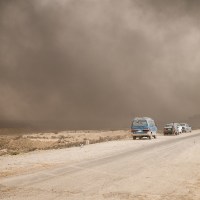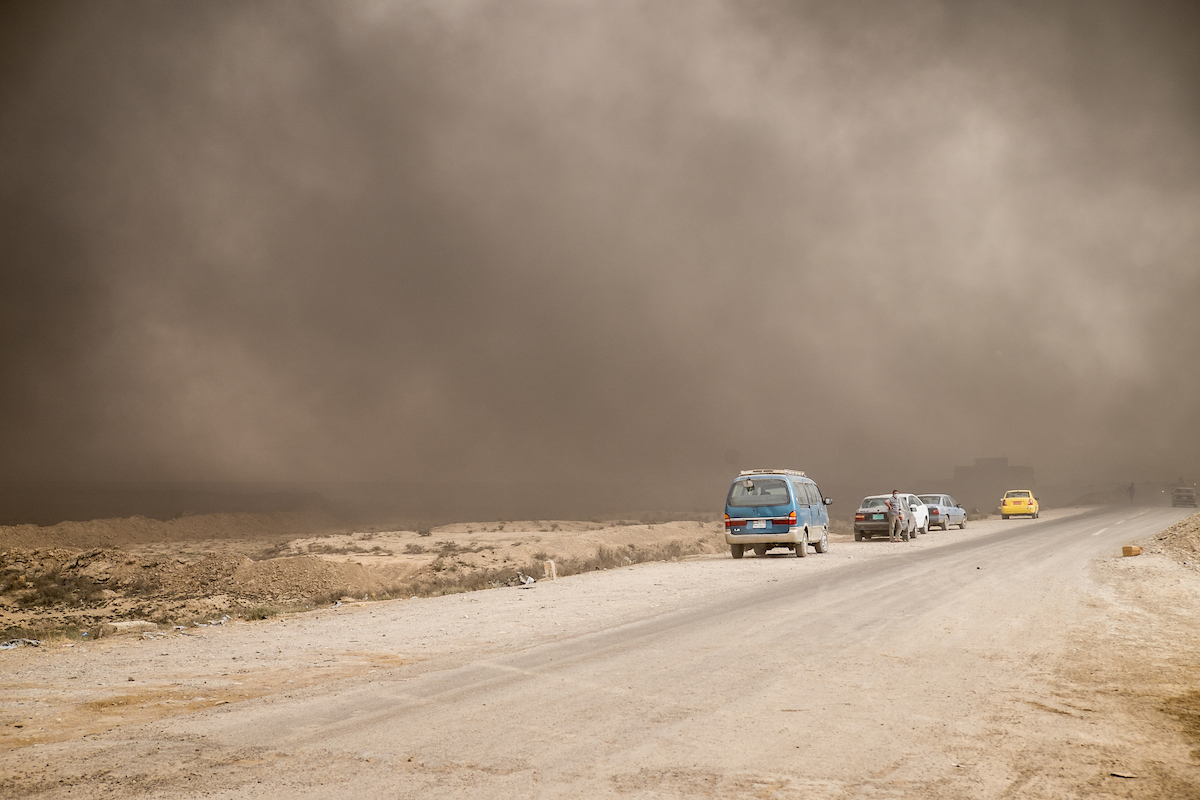Mohammed Suleiman* and his family had already decided that they would stay in their homes in the village of Tuloul Naser, around 20 miles south of the city of Mosul in northern Iraq.
“We decided not to leave regardless of what happened next,” Suleiman said in a phone interview. “We knew the Iraqi army was getting very close. But in the last minute all our plans changed.”
The family heard their local mosque’s loudspeaker calling all the village men to gather in the village schoolyard. “So we went there quickly,” the father-of-five continued; he is keeping his voice low because he is in Mosul and does not want to be caught speaking to the media. “But we were very scared and we didn’t know what the man could possibly want from us. There were around 70 others from our village there when we got there, and three fighters from ISIS.”
ISIS has controlled the nearby city of Mosul for two years, but now they are being pushed out of the city by the Iraqi military and other anti-extremist forces. Suleiman says the fighters told them that they were to leave the village immediately.
“One of them pointed a gun at us and said that anybody who refuses to obey orders will be killed,” Suleiman recounts. “So we didn’t ask any questions.”
Suleiman and his neighbors did as they were told, leaving the village on foot. They were accompanied by members of ISIS and their families. “They were using us as a cover for their withdrawal to avoid being bombed,” Suleiman explains.
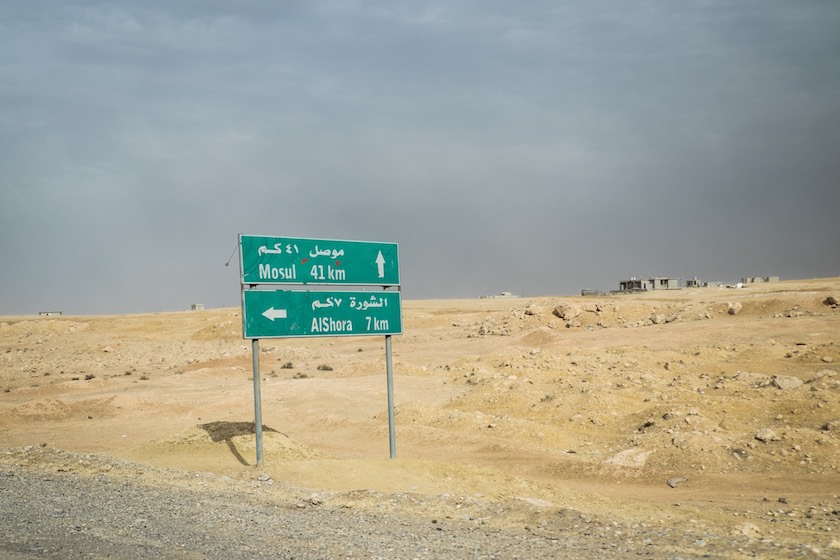
Before the fight for Mosul even began, military analysts suggested that ISIS fighters would quietly withdraw from some areas while fighting fiercely for others. This exactly what Suleiman and his neighbors experienced as they were forced out of their village.
“It was shocking,” he continues. “Those who had cars put their valuables in and left but most of us found ourselves in a convoy, of dozens, walking. Some of the people were crying. We didn’t know anything but we did know they were taking us to the road that led to Mosul.”
“We stopped a lot to let the children and the older people rest,” Suleiman says. “One time we stopped, we saw the dead bodies of the people that ISIS had clearly executed just a few hours previously, just lying by the side of the road. I will never forget how hard we tried to make sure the children didn’t see any of that. We got really scared at this stage. And everyone started to walk a lot faster in case the ISIS fighters were going to try to kill us too.”
“We passed through several other villages and we saw similar groups to our own. We kept walking for two full days and slept out in the open. We thought we would die of hunger and fatigue,” Suleiman recalls.
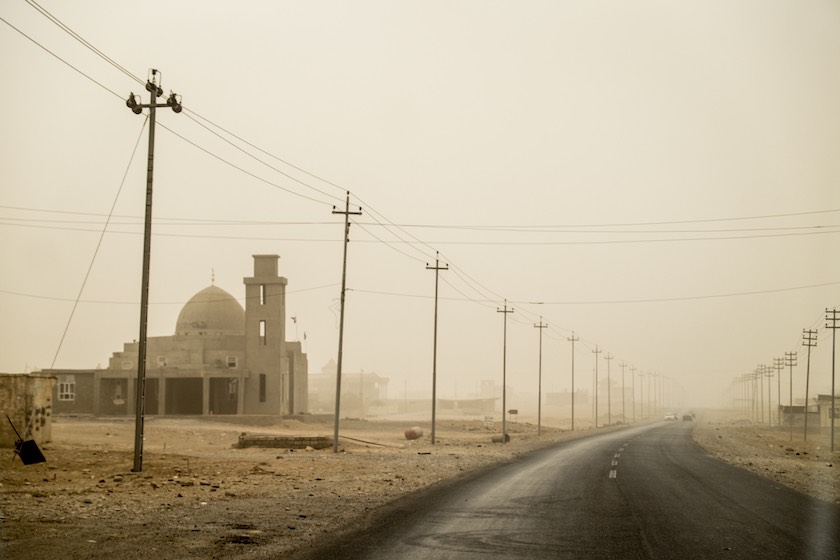
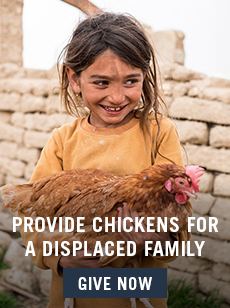
“They were so tired when they arrived, and covered in dust,” says another source inside Mosul. “Their shoes and clothes were torn. Some cars drove to them and helped bring the villagers into the city.”
And Suleiman is not alone, nor is his village. For ten days, people from villages in the surrounding area have been pouring into the city. Mosul’s mayor, Hussein Ali Hajem, who is working from outside the city, confirms that ISIS has already forced the residents of about 35 villages to leave their homes. He estimates that around 22,000 people have been forcibly displaced in this way.
An Iraqi doctor traveling with the Iraqi army (who requested anonymity for security reasons), reports that he saw almost no sign of human life when they passed through the villages in the Ain al-Jaish area outside of Mosul. “Just dogs, cattle and chickens.”
Not all of the villagers who were forcibly displaced have ended up in Mosul. Some families managed to remain in the town of Hammam al-Alil, south of Mosul, which has since been liberated by the Iraqi army. Those who had worse luck ended up in the ISIS-held town of Tal Afar, west of Mosul.
“Leaving our house is not really a good answer because sooner or later, there will be fighting in other neighborhoods in the city too. We want to stay put, in the hope that the city will be liberated and this hell will end.”
Hajem says they believe that around 2,000 villagers were taken to Tal Afar where they are likely to be used as human shields. After Mosul, this is ISIS’s most important stronghold in this area and the battle to liberate this is expected to be fierce.
Talib Shaghati, the commander of the joint military operation to retake Mosul has said that the biggest problem his troops are facing is civilians getting in the way.
ISIS has imported thousands of villagers from outside the city into Mosul and has prevented most locals from leaving the city. Most civilians have barricaded themselves in their home, trying to stay out of the intense fighting that has been taking place in the streets.
One resident in the Karamah area explained, “Leaving our house is not really a good answer because sooner or later, there will be fighting in other neighborhoods in the city too. We want to stay put, in the hope that the city will be liberated and this hell will end.”
As for Suleiman and his family, he and his neighbors are now camping out in government buildings and schools on the south side of Mosul. Hundreds of others are there with them, he told local journalists.
Everyone there is pessimistic, Suleiman noted. “We are waiting for some heavy fighting,” he said. “And we think we might be forced to leave here again too. Death is following us, of that we are sure.”
*Names have been changed for security reasons. A version of this article originally appeared on Niqash.

